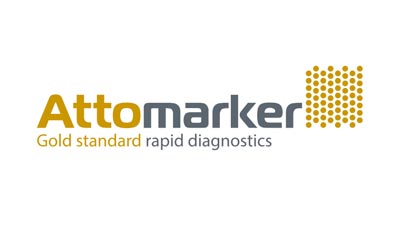
A Novel Diagnosis and Treatment
TO BOOK YOUR ANTIBODY IMMUNITY SPECTRUM TEST: longcovid@re-cognitionhealth.com
Elimination of a SARS-CoV-2 infection requires both antibody and T cells for complete clearance of the coronavirus from the localised infection site. Systemic clearance requires a sterilising serum [1], where antibodies provide elimination of the virus via complexation. Viral persistence has been linked to the pathophysiology of Long Covid [2] which may explain some of the collection of symptoms observed in affected individuals [3]. Clusters of prevalent symptoms include “brain fog” and headaches, fatigue, myalgia, cardio-respiratory distress and gastric disturbance.
In one of our recent studies [4], we have identified a number of antibody immunity endotypes to a spectrum of variants, each with a different antibody quantity and quality. Endotype driven medicine – identifying specific biological and chemical pathways that explain different outcomes for patients – is a key driver for enhancements in healthcare. A universal endotype, U(+), has a high quantity of good quality antibodies to all variants tested – a conserved endotype. Findings thus far indicate U(+) occurs in around 25% of the population. All other endotypes have gaps in their antibody immunity spectra which we believe can allow viral persistence leading to Long Covid.
Long Covid is currently recorded in the UK following one-in-five Covid infections [5], and is being associated with significant increases in long-term ill health and absence from work. Multiple infection is also associated with increased vulnerability to Long Covid. The antibody spectrum of a U(+) patient and Long Covid (LC) patient can be seen in Figure 1. The LC patient has an endotype with a notable gap in antibody quality, in this case to the Wuhan variant, corresponding to the onset of their LC symptoms. Our novel diagnostic to therapeutic approach may allow for certain gaps to be filled and repaired in collaboration with a clinical partner; depending on the variant, the availability of variant-appropriate immunotherapy drugs and the test results.

Figure 1 Immunity Endotype for Long Covid patient reporting onset of symptoms associated with a Wuhan infection, LC, and the Universal Endotype, U(+).
Passive Therapy
In this case, the Wuhan gap in the LC patient spectrum can be filled with an immunotherapy drug effective against the Wuhan variant. The patient shown in Figure 2 was treated with Evusheld on a “named-patient” basis, which improved the spectrum immediately after a single dose. The dose is intramuscular and has relatively slow pharmacokinetics.

Figure 2 Long Covid Endotype 27th Jan and 27th March 2023 following first dose of drug showing a filled gap in the immunity spectrum for the Wuhan variant. Encouragingly, this patient reports changes in prevalent symptoms, decreased frequency of migraines and improved gut performance; at present it is early in the treatment cycle.
Active Therapy
After one or two half-lives, the antibody concentration will be similar to the vaccine response and a hetero-dose of vaccine (vaccine not seen previously by the patient) may be given to break the immunity imprint and repair the gap in the immunity spectrum.
We are excited about this potential of using advanced diagnostics to determine individually tailored therapeutics for Long Covid and, in future, a range of other diseases and conditions. We will report further as our research and clinical work develops.
Prof Andrew Shaw, Attomarker Ltd and Dr Steve Allder, Re:Cognition Clinic
Contact Information: longcovid@re-cognitionhealth.com
https://recognitionhealth.com/mentalhealth/long-covid-clinic/
References
1. Khoury DS, Cromer D, Reynaldi A, et al. What level of neutralising antibody protects from COVID-19? medRxiv 2021: 2021.03.09.21252641.
2. Yong SJ. Long COVID or post-COVID-19 syndrome: putative pathophysiology, risk factors, and treatments. Infectious Diseases 2021; 53(10): 737-54.
3. Castanares-Zapatero D, Chalon P, Kohn L, et al. Pathophysiology and mechanism of long COVID: a comprehensive review. Annals of Medicine 2022; 54(1): 1473-87.
4. James-Pemberton PH, Kohli S, Westlake AC, Antill A, Olkhov RV, Shaw AM. Antibody Affinity Maturation to SARS-CoV-2 Omicron Variants in a Teachers Cohort. medRxiv 2022: 2022.12.01.22282932.
5. Statistics OoN. The prevalence of long COVID symptoms and COVID-19 complications. 2021 (accessed 28th April 2021 2021).
